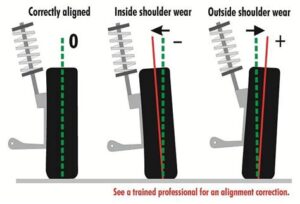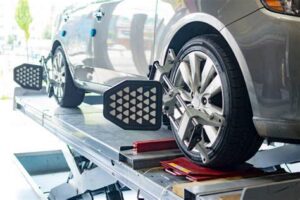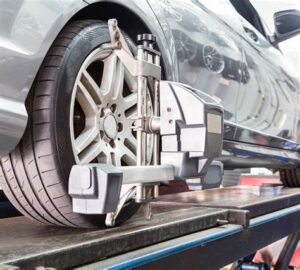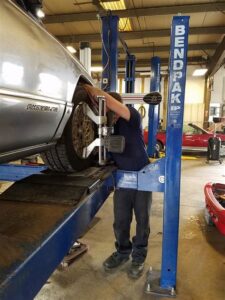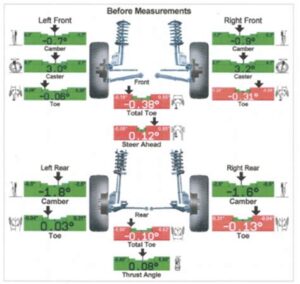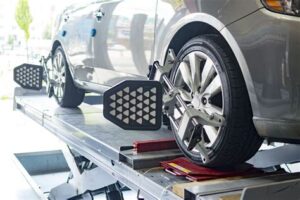Signs Your Car Needs An Alignment
Ensuring your vehicle’s proper alignment is crucial for optimal performance and safety on the road. Misalignment can lead to a host of problems, from uneven tire wear to compromised handling. It’s essential to recognize the signs that your car may need alignment, as early detection can save you time and money while enhancing your driving experience. In this article, we’ll explore the tell-tale indicators of misalignment, the importance of maintaining proper alignment, and step-by-step guidance on how to check for these signs. Whether you’ve noticed a change in your vehicle’s handling or simply want to be proactive in your car care, understanding the nuances of alignment will ensure your car remains safe and efficient. Read on to discover how you can keep your vehicle performing at its best.
Understanding The Importance Of Proper Car Alignment
Ensuring your vehicle has proper alignment is crucial for several reasons. First and foremost, it enhances safety by providing better control and handling of the vehicle. When your car is aligned correctly, it responds more predictably to steering inputs, reducing the risk of accidents caused by handling issues.
Additionally, signs your vehicle needs an alignment may include uneven tire wear, which can lead to premature tire replacement. Proper alignment helps distribute weight evenly across all tires, ensuring they wear out uniformly and last longer. This not only saves you money on tires but also contributes to better fuel efficiency, as misalignment can cause the engine to work harder, reducing miles per gallon.
Furthermore, a properly aligned vehicle minimizes the strain on suspension systems, which can prevent costly repairs down the line. Regular checks and maintenance of your car’s alignment can help you avoid these issues and keep your vehicle running smoothly.
Signs Your Car Needs An Alignment: Uneven Tire Wear
One of the most evident signs your car needs an alignment is uneven tire wear. When your vehicle is properly aligned, the tires should wear evenly across their entire surface. However, if you notice the tread on one side of the tire is more worn than the other, it indicates that there is an alignment issue.
| Type of Uneven Wear | Possible Causes |
|---|---|
| Inner tire wear | Possibly due to excessive camber angle |
| Outer tire wear | May indicate under-inflation or excessive toe |
| Center tire wear | Often a sign of over-inflation |
If you observe these signs of uneven tire wear on your car, it is essential to address the issue promptly. Not only does poor alignment affect your vehicle’s handling and safety, but it can also lead to premature tire replacement, costing you more money in the long run.
The Impact Of Poor Alignment On Vehicle Handling
When it comes to vehicle performance, one of the critical aspects that often gets overlooked is alignment. Poor alignment can significantly impact how your car handles on the road, leading to various driving challenges. Here are some key effects of misalignment on vehicle handling:
- Increased Steering Effort: A car with improper alignment may require more effort to steer, making it exhausting to drive, especially on long journeys.
- Pulling to One Side: If you notice your car pulls to the left or right, it’s a clear sign of misalignment. This can lead to dangerous situations, as it makes it difficult to maintain a straight path.
- Skidding or Instability: Poor alignment can compromise your car’s stability, particularly during turns, increasing the risk of skidding.
- Loss of Traction: When your wheels aren’t aligned, the tires may not contact the road evenly, affecting traction. This can be particularly dangerous in wet or slippery conditions.
These signs your car may need an alignment not only affect driving comfort but also have implications for your safety and the longevity of your vehicle. Addressing alignment issues promptly can enhance handling, improve tire life, and create a safer driving environment.
How To Check For Signs Your Car Needs An Alignment
Identifying the signs your car needs an alignment is crucial for maintaining its performance and longevity. Here are some practical steps to help you check for these signs effectively:
By regularly checking for these signs your car needs an alignment, you can address potential issues early, ensuring a smoother and safer ride.
Taking Action: What To Do If Your Car Needs An Alignment
If you notice any of the signs your car needs an alignment, it’s vital to take immediate action. Proper alignment is crucial not only for tire longevity but also for handling and safety on the road. Here’s a step-by-step guide on what to do:
- Schedule an Inspection: The first step is to take your vehicle to a trusted mechanic or alignment specialist. A professional can determine the alignment status and recommend the necessary adjustments.
- Understand the Cost: While alignment services are generally affordable, prices can vary based on the vehicle type and location. Request an estimate and inquire about any warranties or guarantees the service may offer.
- Consider Tire Replacement: If your tires show significant wear, particularly on one side, you might need to replace them before performing an alignment. Discuss this with your mechanic to get the best advice.
- Check Other Components: Poor alignment can also result from worn-out suspension parts. Ensure a thorough inspection includes checking for damaged tie rods, ball joints, and bushings to avoid recurrent alignment issues.
- Stay Proactive: After alignment, keep an eye on your vehicle’s behavior. Regularly inspect your tires for early signs of uneven wear and pay attention to how your car handles, which can help catch alignment issues before they worsen.
Addressing alignment issues not only improves driving comfort but also enhances overall vehicle safety. If any of the signs your car needs an alignment are present, don’t hesitate to consult a professional to ensure your vehicle remains in excellent condition.
Frequently Asked Questions
What are the common signs that indicate my car needs an alignment?
Common signs include uneven tire wear, the steering wheel being off-center, pulling to one side while driving, and vibrations in the steering wheel.
How often should I get my car’s alignment checked?
It is generally recommended to check your car’s alignment every 6,000 miles, or at least once a year, but it can depend on driving conditions and habits.
Can driving over potholes affect my car’s alignment?
Yes, hitting potholes, curbs, or other obstacles can easily knock your car’s alignment out of specification, necessitating a check and possible adjustment.
What is the impact of misalignment on fuel efficiency?
Misalignment can lead to increased tire wear and resistance, which can negatively affect your fuel efficiency and increase your overall fuel expenses.
Are there any long-term consequences of ignoring alignment issues?
Ignoring alignment problems can lead to premature tire wear, potential safety hazards, and costly repairs in the long run due to strain on other vehicle components.
Can I visually check if my car needs an alignment?
While a professional alignment check is best, you might notice uneven tire wear or that your steering wheel isn’t centered when driving straight; these can indicate alignment issues.
How does proper alignment contribute to driving comfort?
Proper alignment ensures that all four tires work together optimally, leading to a smoother ride, improved handling, and reduced strain on the vehicle, hence enhancing driving comfort.
